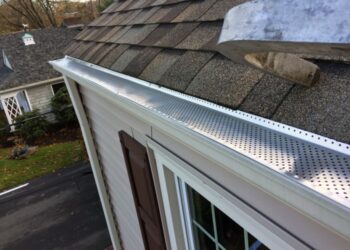Embark on a journey to transform your vinyl house siding with a fresh coat of paint. This guide covers everything you need to know, from preparation to maintenance, ensuring your siding looks flawless for years to come.
Dive into the world of painting vinyl house siding and discover the tips and techniques that will elevate the exterior of your home.
Preparation for Painting Vinyl House Siding
To ensure a successful paint job on your vinyl house siding, proper preparation is key. This involves gathering the necessary materials, cleaning the siding thoroughly, and prepping the surface for painting.
Materials Needed:
- Pressure washer or garden hose
- Mild detergent or vinyl siding cleaner
- Bucket
- Soft bristle brush or sponge
- Painter’s tape
- Primer suitable for vinyl surfaces
- Exterior paint suitable for vinyl siding
- Paint brushes or rollers
- Drop cloths or plastic sheeting
Cleaning the Siding:
Before painting, it is crucial to clean the vinyl siding to remove dirt, grime, and any mildew or mold that may have accumulated. This will ensure that the paint adheres properly to the surface and results in a smooth finish.
Steps to Prepare the Siding Surface:
- Start by thoroughly cleaning the siding using a pressure washer or garden hose, along with a mild detergent or vinyl siding cleaner.
- Scrub any stubborn stains or areas with a soft bristle brush or sponge to ensure a clean surface.
- Rinse the siding thoroughly and allow it to dry completely before proceeding to the next steps.
- Use painter’s tape to mask off any areas you do not want to paint, such as windows, doors, and trim.
- If the siding is new or has not been painted before, apply a coat of primer suitable for vinyl surfaces to promote adhesion.
- Once the primer has dried, apply the exterior paint suitable for vinyl siding using paint brushes or rollers, following the manufacturer’s instructions.
- Allow the paint to dry completely before applying a second coat if necessary.
Choosing the Right Paint for Vinyl House Siding
When it comes to painting vinyl house siding, selecting the right type of paint is crucial for achieving a long-lasting and durable finish. Choosing the appropriate paint can enhance the appearance of your home and protect the siding from weathering and fading.
Best Type of Paint for Vinyl Siding
- Acrylic paint: Acrylic paint is a popular choice for vinyl siding due to its flexibility and durability. It adheres well to vinyl surfaces and provides excellent coverage.
- Urethane paint: Urethane paint is another suitable option for vinyl siding, offering superior adhesion and resistance to chipping and peeling.
Finishes Available for Vinyl House Siding
When painting vinyl siding, you have several finish options to choose from, each offering unique benefits:
- Satin finish: Satin finish provides a subtle sheen and is easy to clean, making it a great choice for vinyl siding.
- Semi-gloss finish: Semi-gloss finish offers a higher sheen and is more resistant to moisture, ideal for areas with high humidity.
Significance of Selecting UV-Resistant Paint
It is essential to choose a UV-resistant paint when painting vinyl siding to protect it from sun damage and fading. UV-resistant paint helps maintain the color and integrity of the vinyl siding over time, ensuring a longer lifespan for your paint job.
Painting Techniques for Vinyl House Siding
When it comes to painting vinyl house siding, using the right techniques can make a significant difference in the final result. Here are some recommended painting techniques for vinyl siding to help you achieve a smooth and even paint application.
Use the Right Tools
Before starting the painting process, make sure you have the right tools on hand. Brushes, rollers, and sprayers are commonly used for painting vinyl siding. Each tool has its advantages, so choose the one that suits your preference and experience level.
Preparation is Key
Prior to painting, clean the vinyl siding thoroughly to remove any dirt, dust, or mildew. Ensure the surface is dry before applying the paint. Use a mild detergent and water solution for cleaning, and allow sufficient time for the siding to dry completely.
Apply Paint Evenly
When painting vinyl siding, it’s essential to apply the paint evenly to avoid drips or streaks. Start from the top and work your way down, using long, smooth strokes for a consistent finish. Avoid applying too much pressure, as it can lead to an uneven application.
Consider the Weather
Choose a day with mild weather conditions for painting vinyl siding. Avoid painting on extremely hot or cold days, as it can affect the paint’s adhesion and drying process. Ideally, aim for a dry day with moderate temperatures for the best results.
Maintenance and Care for Painted Vinyl House Siding
Maintaining the appearance of painted vinyl house siding is essential to prolong its lifespan and keep your home looking fresh and vibrant. Regular maintenance and proper care can help preserve the color and overall condition of the siding.
Regular Cleaning
One of the key steps in maintaining painted vinyl house siding is regular cleaning. Dirt, dust, and grime can accumulate on the surface, leading to a dull appearance. To clean painted vinyl siding, use a mixture of mild detergent and water.
Avoid using harsh chemicals or abrasive cleaners, as they can damage the paint finish. Use a soft brush or cloth to gently scrub the surface and rinse thoroughly with water.
Inspect for Damage
Periodically inspect the painted vinyl siding for any signs of damage, such as chipping, peeling, or cracks. Address any areas that need touch-ups promptly to prevent further deterioration. Repainting or touching up small areas can help maintain the integrity of the paint and protect the siding from the elements.
Repainting or Touch-Ups
Depending on the quality of the paint and the climate conditions, repainting or touch-ups may be necessary every 5-7 years. However, if you notice significant fading or damage to the paint, consider repainting sooner to prevent further issues. Touching up small areas as needed can help maintain the overall appearance of the siding.
Protective Coating
Consider applying a protective coating over the painted vinyl siding to enhance durability and resistance to fading. This additional layer can help prolong the lifespan of the paint and reduce the frequency of repainting or touch-ups. Consult with a professional painter for recommendations on suitable protective coatings for vinyl siding.
Final Thoughts
In conclusion, painting your vinyl house siding can breathe new life into your home’s appearance. By following the steps Artikeld in this guide, you can achieve a professional-looking finish that will withstand the test of time.
Detailed FAQs
How often should I repaint my vinyl house siding?
It is recommended to repaint your vinyl house siding every 5-7 years to maintain its appearance and protection.
Can I use a sprayer to paint my vinyl siding?
Yes, a sprayer can be used for painting vinyl siding, but ensure to follow proper techniques to avoid drips or uneven coverage.
What type of paint is best for vinyl house siding?
Acrylic paint is commonly recommended for vinyl siding due to its durability and flexibility.






